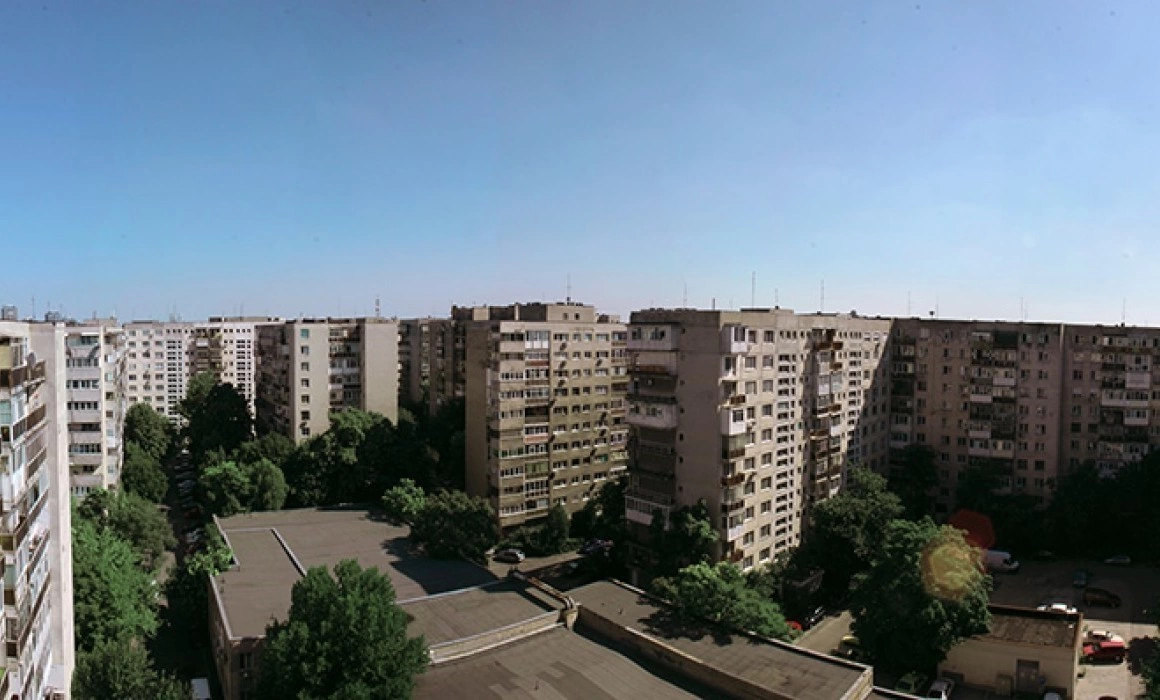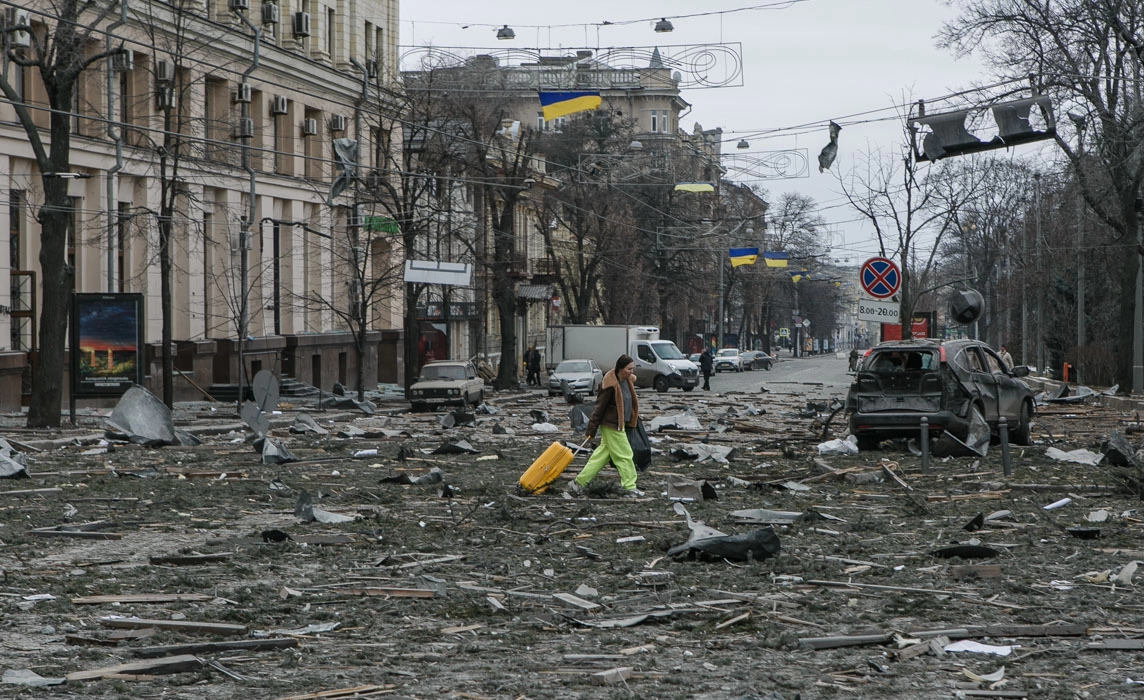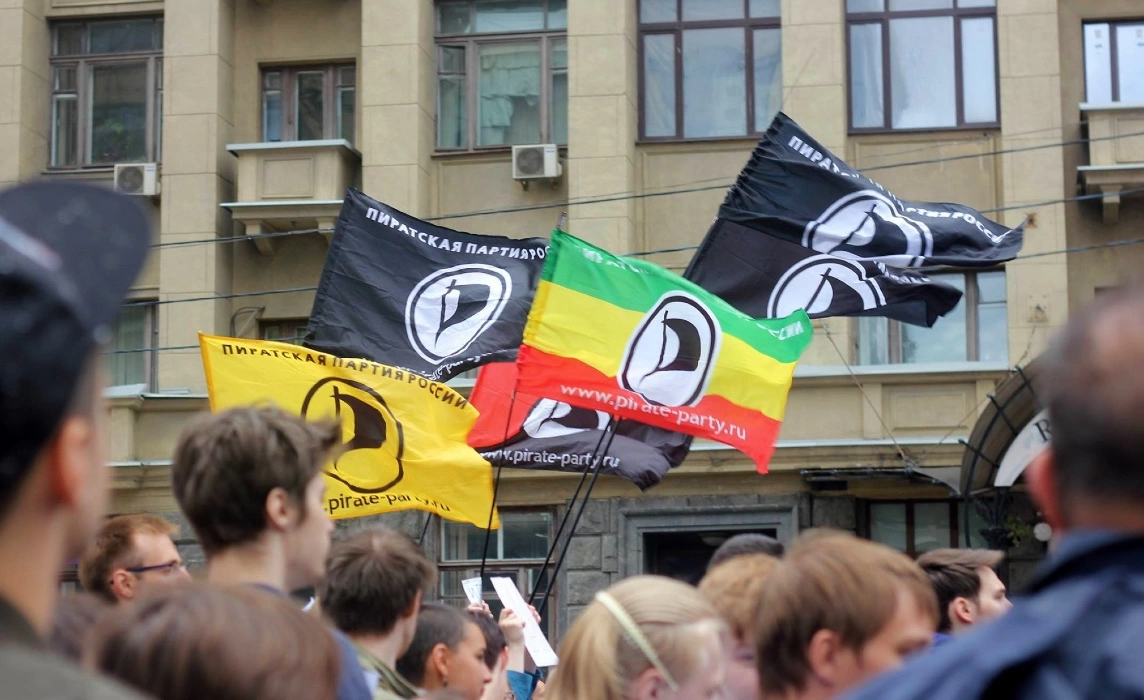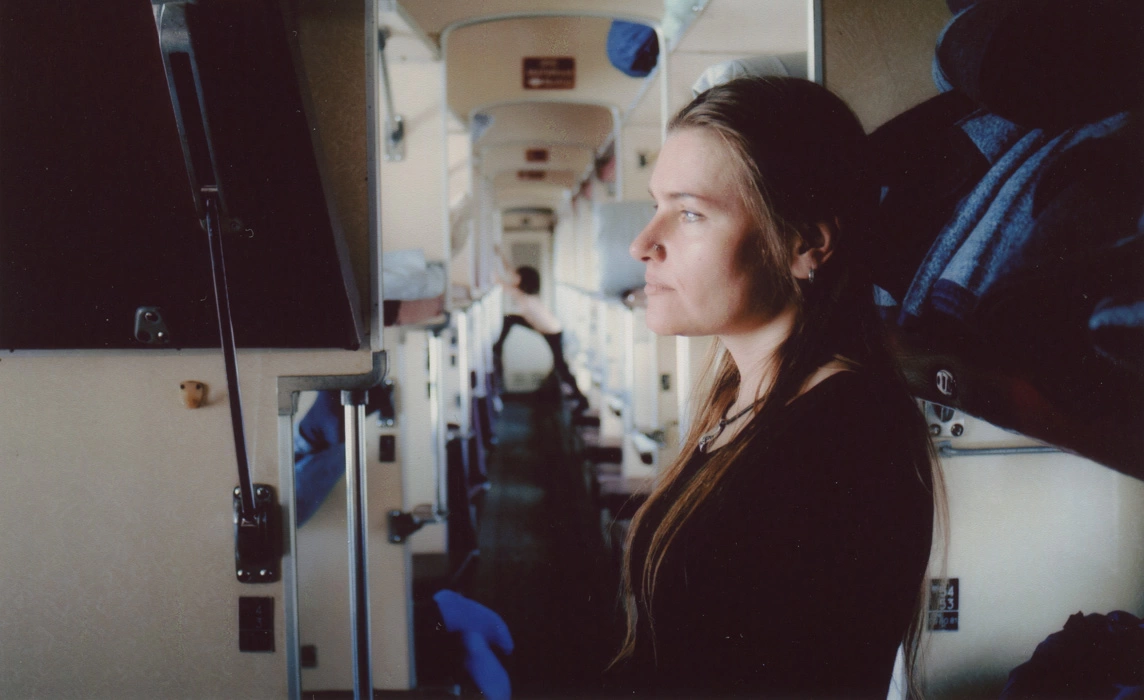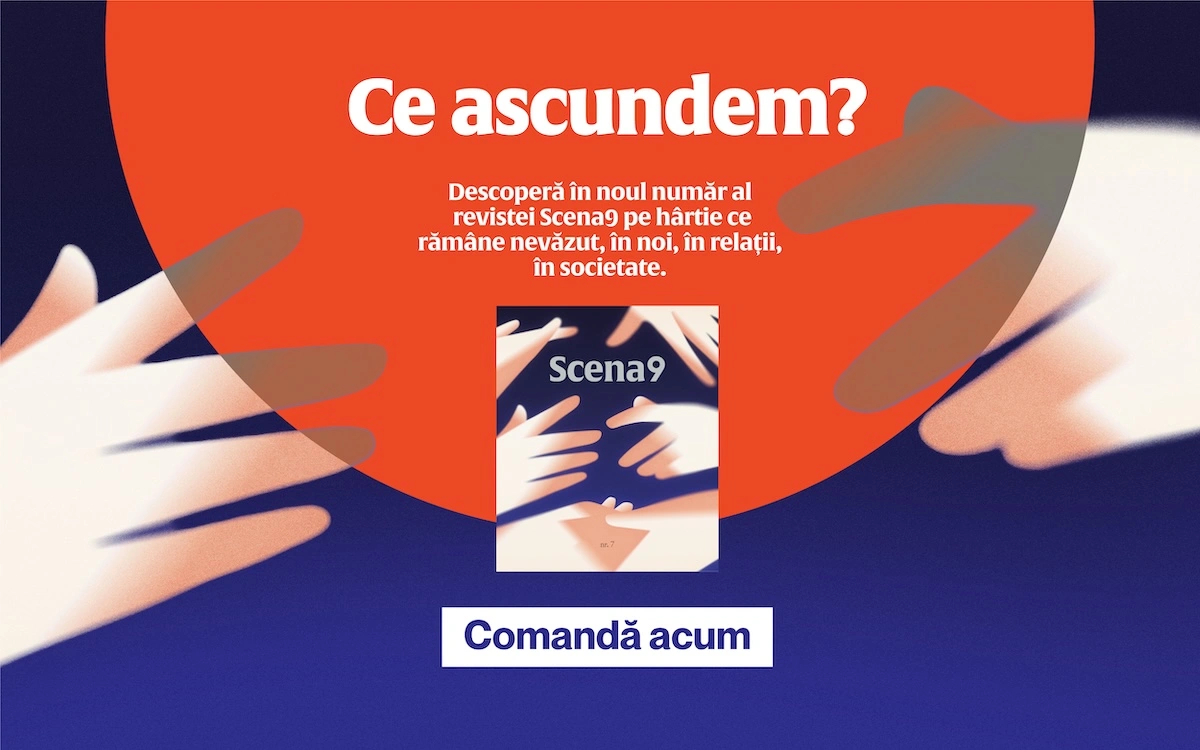Me, I’ve been doing it for 31 years. I’ve done condo buildings, filled with retirees, a house with a garden, a peach tree, a nut tree, home-grown strawberries and tomatoes, and 10+ cats in Giulești, a wagon-style home around Grădina Icoanei, with the year 1898 in a base-relief on its frontispiece, then condo buildings again, in Militari, around the North Railway Station, in Dristor—and I’ll just have to wait and see what comes next. Till then, as it were, I wouldn’t be able to average out the Bucharest way of life from all these experience. Not to mention there are plenty of experiences I haven’t had yet (renting out a place, paying for a mortgage, living in the ghetto, and so on).
Luckily, I came across 30 researchers who translated the question of how does one live in Bucharest? into social science speak. What is the status quo of living in Bucharest? They sought the answers throughout the city, for the Case vii project, as well as for its corresponding series of online documentaries, Bucharest Housing Stories. They went out in the field, shot and edited 7 video series episodes comprising 21 characters, published a book that explores 8 forms of living in Bucharest and held creativity workshops with over 150 secondary school students. They gave the city its micro- and macro-stories back, spoke to those who are usually invisible, and managed to get your average Bucharest city dweller to ask herself:
How do we inhabit Bucharest?
Loads of ways. It’s tough, too. Each of us has her own story. But how exactly do we do it?
It’s better to live in a home than in the street, better to rent out a place than to live on campus. Better to own a place than to rent it, better to live in a gated apartment complex rather than in a “box-like Communist block of flats”. And the best way of life is in a house with a garden. The Romanian dream comes with flowers, a barbeque, and a small yard.
Given the size of the topic at hand, the Bucharest Housing Stories project took up an appropriate form. The team brought together young researchers from the University of Bucharest and The National School for Political Sciences and Administration. It benefitted from the support of the two Sociology department heads from the two institutions (Liviu Chelcea and Vintilă Mihăilescu) as well as from that of the partners in the Bucharest University of Architecture.
I retraced the project, from its community stories to the individual stories and discussions with some of the researchers involved in it. I came across a Buchares that looks easy to talk about, but is, in fact, as complex as an equation.
Bucharest, 7+1
Bucharest Housing Stories showcases 7+1 aspects of the city. 7+1 ways of inhabiting it. 7+1 bright colors, under the surface of the “monochromatic, monolithic” grayness of Bucharest (Vintilă Mihăilescu, in the preface to the book that came out of the project). “Home” is a process of negotiating one’s identity, irrespective of whether you place it on the map at Tineretului, at the far end of Berceni, in the Regie student campus, or on the pavement outside the evicted homes on Vulturilor 50.
The 8 types of living in Bucharest are outlined against a backdrop that looks like this:
- “At home” = you have a home. According to the official stats (Eurostat, 2014), only 3.9% of Romania’s population rents out a place to live, compared to 47.5% of Germans and 42.8% of Austrians. Of course, official data clashes with the boundaries of the gray economy. Romanian rental laws are disadvantageous and don’t grant the tenants enough protection, so it’s tough to say how many Romanians are actually renting out a home.
- “At home” means living in a block of flats. Data collected in the 1990s indicate that 80% of the homes in the city are housed in prefab buildings, built between 1960 and 1980. Romania’s urbanization plan for the 1981-1990 decade included bringing the number of flats up to 1.7 million.
- “At home” is expensive. Between 2003 and 2008, Romanian gleefully explored the concept of “home financializing”. Or, in plain English, buying homes via credits. The promise that you could finally make the dream of owning a home come true had emerged. The dream shattered abruptly, once the global financial crisis hit. According to 2015 central bank statistics, 70% of Romania’s delinquent loans were granted before 2008. That year, a one-bedroom apartment in an average Bucharest neighborhood cost more than EUR100.000.
- “At home” is about family. Perhaps no other statistic is more telling than this seeming truism, revealed by a 2010 study undertaken by the Samusocial non-profit. The research looked into the reasons for which someone might end up in the street. Of the adults living in the streets of Bucharest, over 47.5% ended up there on account of a family conflict or a divorce. Of those who responded to the poll, 2,023 were male and only 608 were female.
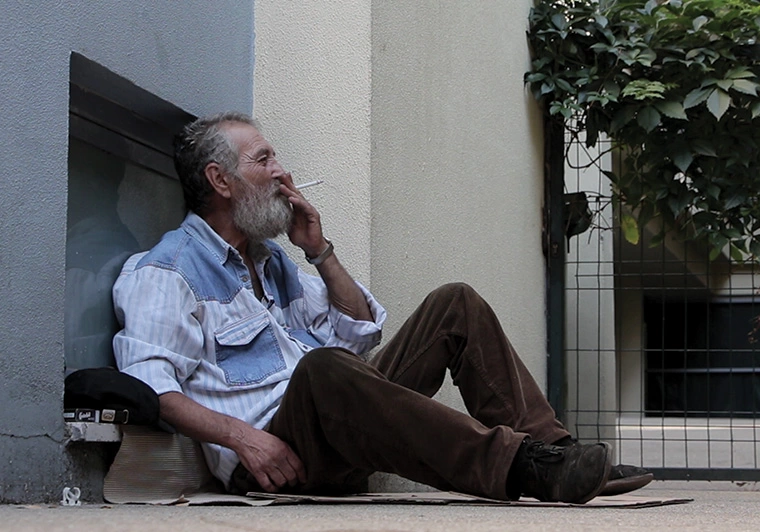
The 7 episodes and 8 articles published in the final report of the project move past the statistics, in search of the individual and of communities. They recount the way in which we all turn a house into a home, show us those who live by our side, but whom we often refuse to see, and draw the necessary conclusions regarding each individual way of living.
How does one live...
In a block of flats
It sucks to live in a block of flats, there isn’t enough greenery around, you can’t peacefully ponder your future, says Alex, who lives in the Calea Turda area. Ronița, who has recently returned to Romania, still feels she hasn’t grown accustomed to living in Bucharest. She has, nonetheless, grown attached to the flower girls at the corner shop and to the shopkeepers at the store who’ve learned how she takes her coffee. And Ms. Marina, who bought her apartment in a “Party staff” building, in exchange for her previous flat, has since come to realize that she’s an intruder to her neighbors.
In „High-rise flats: Between a living space and a home”, Andra Mitia Dumitru describes living in a condo building as an adaptation process, to the norms we’ve inherited from the previous regime. The norms in question dictated that all homes must look nearly the same. The field research was undertaken in a “privileged” part of town: the Tineretului neighborhood. People want to live there, not just on account of the park nearby, the proximity to the central area, and the buildings themselves, which are newer than in other areas. They enjoy living among people whom they resemble, both in terms of age, as well as in terms of purchase power. They personalize their living spaces, but ignore the public areas. In fact, residents aged 25 to 40 regard neighborly relations as strictly space-related. For the older owners’ generation, community used to have a completely different meaning:
Young folks, whom I don’t know, have moved in here. Some older women have died and young people came here. I run into them, we say hello, but I don’t know who they are, where they live, what they do. (B., 82 ani, Tineretului neighborhood dweller)
In interim
The thought of living in a dorm while you’re a student can seduce you. You’ve finally gotten rid of the nagging back home. You can throw as many parties as you want, be they in the P-dorm you’ve been assigned to, or in the Berceni studio flat you’re renting out, or wherever else. You’re not tied down to a place, a bank loan. Freedom, yo!
In reality, both the respondents in Maria Mateoniu’s study, From dorm room to rented home, as well as the three dorm dwellers in the themed episode, build a different type of narrative. In the dorm, everyone’s dissatisfied with the person who lived in their room before them. The college students who come in from outside of Bucharest have a hard time getting used to the din in Bucharest. Eating becomes a negotiation with the schedule of the arrival of the package from back home and with one’s roommates, who might (or might not) be able to cope with the scent of reheated borscht. Laundry can only be done according to a tight schedule. The superintendents are Cerberus-like. If you ring someone up to your room, you need to answer to authority. And when you’re renting, you keep hoping that it’s just a stage. You’ll own a home of your own. One day. Maybe. That would be so great.
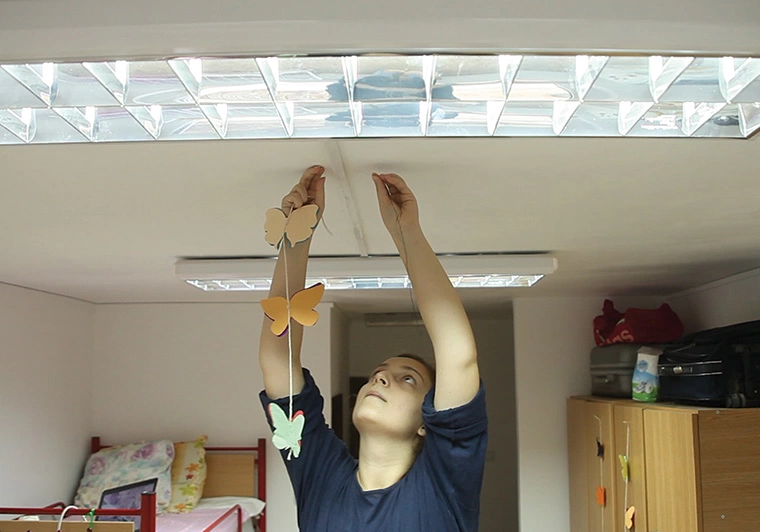
I think… I’ve got this mental blockage, you know? ‘cause, like… I don’t even see an immediate solution: “Yes, this year I’ll buy my own home and do this and that.” But, at the same time, I can’t see myself in rented flats forever either, you know? I mean, I figure I can cope right now, but what about when I’m old? I have no idea what it’s going to be like then, no idea how I could keep doing this… (R. M., female, 38, Berceni tenant)
On loan
When you know you’re living in a house that belongs to a bank, first and foremost, for several dozen years, your loan installment will inevitably end up dictating your lifestyle. In the Bucharest Housing Stories documentary series living on loan has no dedicated episode, but it emerges frequently throughout. The college students living in dorms can’t imagine ever coming to afford anything like it and they also seem afraid of the prospect. Residential complex dwellers do take the step, which comes along with a series of compromises in tow. Most often, they come to terms with this for the sake of the comfort of a recently enlarged family. Meanwhile, in the towns and villages outside Bucharest, home loans are the road to fulfilling the dream: buying a long wished-for home with a yard, an orchard, animals, and all the trimmings.
The study An Ethnography of Living in Installments by Oana-Cristiana Iftode walks you through the process. You end up taking out a loan, because you’re spending too much on rent as it is. The longest stage is that of finding the home. In spite of a standard lending process, it’s all a matter of context: the notary, owner, real estate agent, loan officer all get their say in the process. And then come the months, or even years, when you turn your home into ‘at home’, one wall after the other.
When you draw the line and add things up, home loan owners paradoxically come across as a happy minority, because they enjoy a relative financial stability. They negotiate their risks and work as much as they can, in order to accommodate the pressure of a debt that will last them 20-30 years:
First off, we’ll definitely have to give up going on holiday this year. We won’t go off someplace every weekend. We won’t be buying new clothes on every paycheck. You might buy something to wear when you need it and you might also give up smoking, ‘cause we both smoke. (R.P., female, 26, 30-year home loan through the First Home program)
In a new, clean, beautiful place
In Big, clean, and beautiful. From Communist blocks of flats to residential ensembles, Cristina Boboc writes about “the new new person”. She dreams of a home like the ones abroad, because this represents a “symbolic break between the past and the future”. New housing complexes are guarded and/or gated, they’re bigger, cleaner, and nicer looking than the blocks of flats built during the Communist era.
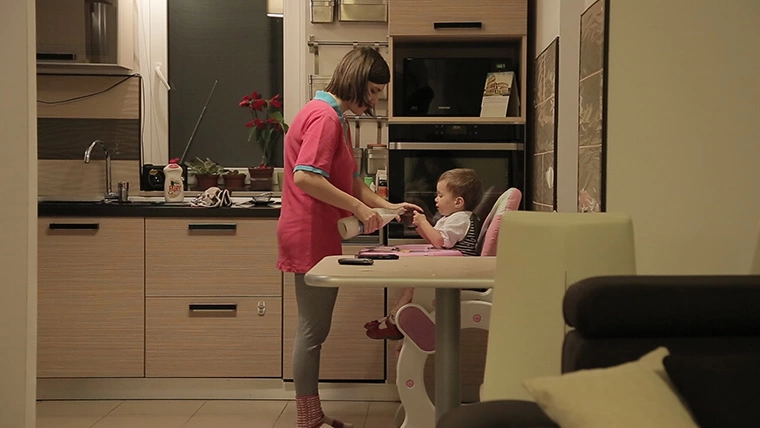
Both the three protagonists of the residential complexes episode, as well as some of the people interviewed during the field research stage recount that they chose to move into a new building for a better future. Living there, where everything looks “like in a Hollywood picture” represents a measure of personal success for them. Many have turned down items they received from their parents, when they furnished their new apartments. Memory must be erased. And the discourse seems to revolve around the notion of cleanliness: from the fact that “the trash chute no longer stinks” to the absence of “commie relics” in the buildings, as well as including other types of symbolic cleanliness:
We left Bucharest to get rid of the gypsyness, the dirt, to no longer see so much black around us. (C.T., male, 36, residential complex inhabitant)
Outside Bucharest
On the one hand, the ideal form of living in Bucharest seems to be the house with the yard. On the other, there isn’t much land to build on left in the city. So, what remains is the larger Bucharest metropolitan area, with is towns and villages, where the dream can still be turned into a reality. Over the past years, there’s been an increasingly accentuated trend of reverse migration, which, as opposed to the one during the socialist era, worked from the urban to the rural. And places such as Chiajna, Chitila, or Domnești witnessed a transformation, from a village to a town, from agricultural to residential. How do these things all work together?
It’s still almost quiet around Bucharest, but building residential complexes and new roads have cranked up the noise a notch. Utility networks have also appeared, but it’s not too unusual not to be connected to running water or the sewage system around Bucharest. The old houses have been “torn down”, one by one. They’ve cleared up room for the new industrial areas, hypermarkets, and new homes, social status symbols.
There used to be a shame in telling people you’re from County Ilfov: peasants, peasants! Ilfov’s snazzy nowadays. Mentalities, they are a-changing! (P.I., male, 65, Chiajna village inhabitant)
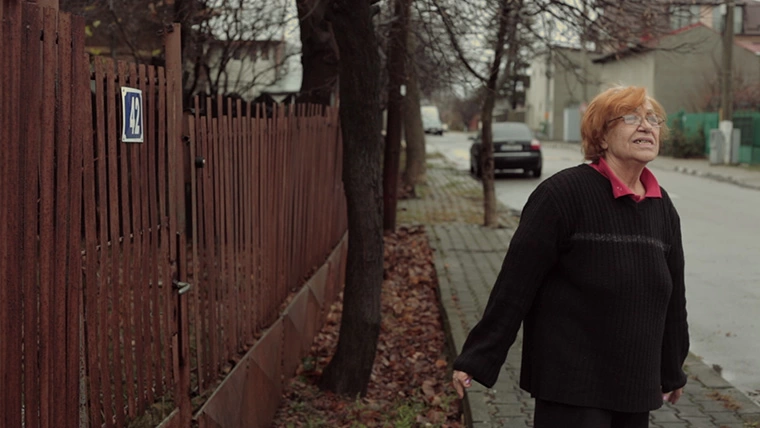
In retroceded homes
The story of nationalized homes begins in the ‘50s, when the authorities requisitioned many houses. They brought in new tenants into these state-owned homes and “judiciously” divided up the space. They had whole families move into a single room. Survival strategies made former owners surround themselves with relatives from their extended families, or with acquaintances from around Bucharest, willing to move. Then, the already infamous law 112/1995 created the chaotic framework within which formerly nationalized homes were retroceded. Old state tenants ended up face to face with original owners, who allowed them to go on living there, in the best case scenario. Misfortunate cases ended in endless lawsuits, homes sold together with litigious ownership rights, and evictions bordering on unlawfulness and abuse.
The episode on nationalized homes explores three tales linked with a common thread which, however, are set apart by entire worlds. Dan is raising his children alone, in a derelict home, which he’s occupied illegally, but for which city hall has cut him a deal. He’s renting it out from the authorities for the modest price of 200RON/month. He’s aware he could get evicted at any time. Grigore got the Romana Square block, built by his father and grandfather, and has chosen to allow the former tenants to live there, rent-free. His priority, which he now takes pride in, was to prevent the building from collapsing.
The most problematic case is that of Vasilica, evicted together with several dozens of other people from the building on Vulturilor St. 50. The violent eviction, during which the inhabitants saw their personal possessions taken away and flung into the landfill at Glina, has left being a resistance camp. For more than a year and a half, Vasilica lived in the street, in improvised barracks, repeatedly torn down and rebuilt. The Vulturilor case brings to the table “an issue that has been rightfully deemed historic, as it stretches out over the span of more than 60 years”.
We weren’t the kind of folks who never paid their rent, the utilities, the… Like, we were up to date with all of it. And for them to come here and kick me out, leave me in the street. I mean, if the man’s come back to take his home, give him the home, it’s his to own, but who are you going to leave me to, after 35 years? Who are you leaving me to? No one?! I have two children, I have my brothers, an ill mother, an ill father. (C.M., evicted, 32)
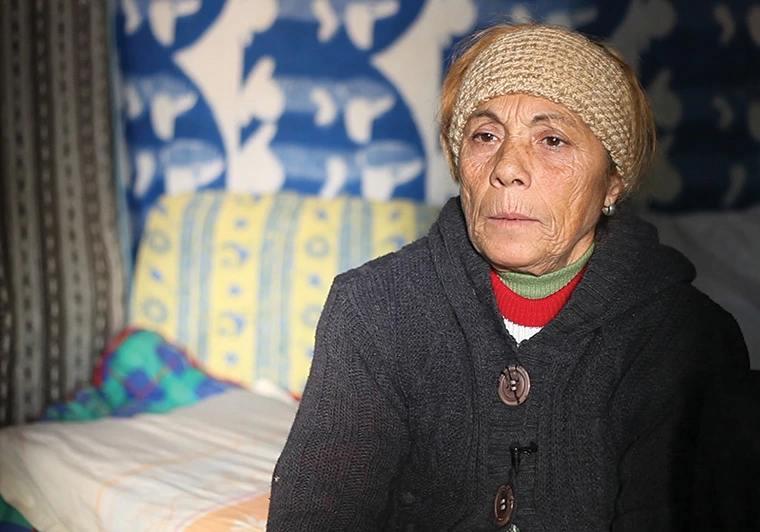
In the ghetto
In the ghetto, you have nothing. Not in the IMGB area, explored by Vlad Cătună in the article Collective living and solidarity in “ghetto” type areas. Dorms on Nehoiu alley, and not in the Ferentari you get to see in the documentary episode. Services are nowhere in sight, utilities have been desisted, over the inhabitants’ debt, Ferentari is no stranger to drug problems, entire families are living in rooms no bigger than 10 square meters and there even exist homes set up in the buildings’ shared bathrooms.
So, what is there, in the ghetto? Beyond the fear that Cătună writes candidly about (“there were times when I let stereotypes get the best of me” – he took along no money and didn’t use his phone) the cultural identity of the ghetto is based on the concept of extended families. There’s always someone outside the building, even late in the night. The dwellers help one another out with food, money for medical assistance and, rarely, when they can spare it, they all chip in for the shared spaces. The children are under everyone’s surveillance and the parties, weddings, and other dances are also present, outside the buildings. But the phenomenon of ghettoization has forced Roma ethnics who live in such areas to forsake their traditional cultural identity:
I’ve started paying more attention to the way I talk when I leave this place… I act like the Romanians. And I noticed it’s better this way. They no longer give me the side-eye.
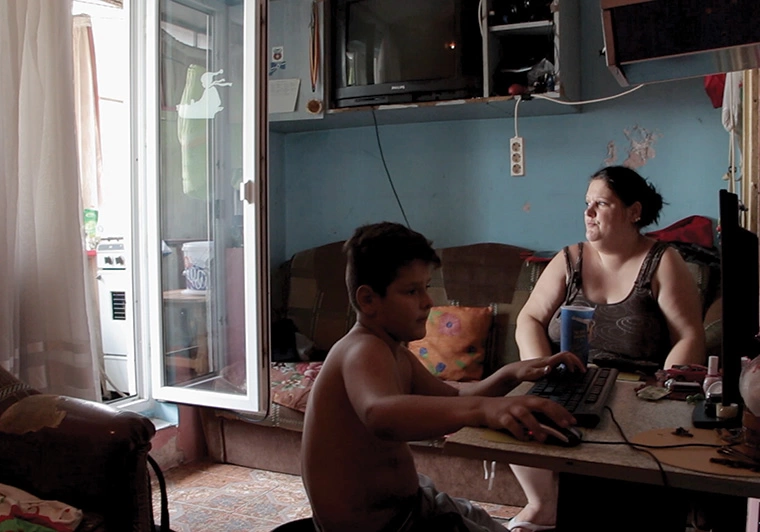
In the street
They’ve ended up there straight from the orphanage, following family conflicts, or after losing their jobs. They’ve lived in trash chutes, parks, sewers, railway stations, basements, or wherever else they could. They’ve worked a day here and there, in construction, as informal parking aids, selling flowers, bracelets, and other knick-knacks. They’ve gone through depression and have become de-socialized. Some have ended up addicted to alcohol or drugs. Many have been living in the street for decades, after having had enough of the abuse in the placement centers. They each have their own survival strategies, friends among other homeless people, and allies in the ranks of charities. Some hope to one day rebuild their lives.
The phenomenon of living in public spaces seems to have been inexistent before 1990. We owe this, on the one hand, to the lack of transparency of the socialist regime and, on the other, to its living policies, which ensured all employed citizens receive a home. Once the large industrial companies were dismantled and the economic regimes changed, some became convicted to depersonalization. And, in spite of the lack of money, nourishment, and a social support system that plagues them, the most hurtful aspect of living without shelter seems to be denying these people their human dignity.
[What’s the hardest thing about ending up in this situation?] Being hounded. (...) If you look carefully at someone who’s looking at you and they’ve realized you’re a homeless person, seeing as you often can’t wash, have no clothes to change into, or get lice, god-knows where… In that instant, not only does that person look at you with disdain or disgust. But their revulsion, which is manifest toward someone sitting next to them, is also filled with a sort of, how should I call it?, contempt that hurts. It hurts really badly (V.A., 61, lived in the street for 10 years)
The whys and hows of living
For Andra Mitia Dumitru (sociologist), the need to research ways of living stemmed from her own “living itinerary, which was somewhat mutable”. She moved to the city for university, lived with relatives, in rented places, and in dorms, too. She’s filtered all her Bucharest experiences through comparing them with the 18 years she spent in a single home, back in her hometown. She chose the topic of living in a block of flats precisely because her relationship to Bucharest’s flats is “troubled, to this day”. Her personal wager was to mediate the experience trough research. Then, she also says, “I was happy to be given the chance to look at such a common issue (from the perspective of a researcher, editor’s note): ‘how do we live?’ It’s interesting to get to examine an invisible question, but that’s our job as sociologists.”
Andra’s research started from the question: “what does it mean to feel at home?” How is a home built, in relation to all the material aspects of an apartment, starting from its surface and furniture to the decorative details? She chose the Tineretului neighborhood, because it was special. She’d intuited this when she’d gone there looking for a home of her own. She’d noticed the area was in high demand, with prices to match. She wanted to learn the reasons for this from the field research, armed with the tools of anthropology.
The field research was a constant negotiation. “Aside from my presence in the people’s apartments, taking photos ‘around the house’” was also an issue, which some respondents felt was too intrusive. “Basically, whether or not they accepted or refused to let me take pictures around the house indicated whether or not they accepted me there, as a researcher, and it was particularly telling of their understanding of the goal”. The key to achieving this understanding came through dialog. During one stage of her research, Andra walked around through randomly selected buildings, knocked on doors, and asked questions, when the people opened. “It was unexpected to find people who were open to this idea and even willing to tell us how they lived. I was perhaps most taken aback, when people I’d first started talking to 5 minutes before would ask me to come into their homes and told me about the changes they brought to their apartments. This told me a great deal about the trust people place in strangers. Living amply resonates with life stories and it is that very trigger that opens the way to dialog.”
Andra says the mission to research ways of inhabiting Bucharest has only just begun. Ideally, we ought to have the complete puzzle: “an instant shot of the way we live, in a certain timeframe, in a given context”, by analyzing all the ways in which we inhabit the city. Until then, the Bucharest Housing Stories puzzle fills in frequently invisible areas of the city, through observational dialog, with unusual characters, from homeless people to students living in the city’s dorms, to retroceded home owners.
Ileana Szasz (visual anthropology PhD candidate) is one of the series’ three directors, alongside Matei Budeș and Vlad Trandafir. She recounts how she ran around the city when they shot the episode about people with no stable address. That notwithstanding, the episode about living in the street was not the most difficult one to film. When they tried to shoot in the dorms, they realized they needed to get past the Cerberus supers, figure out for themselves “where you’re allowed to shoot and where you’re not”, and, basically, to go through all the challenges of red tape. And she also had to negotiate things with her editor, Alexandra Diaconu. Alexandra made the tough calls, to cut out fragments that no longer fit in there, because of format constraints. Ileana made sure the final footage still included the fragments she’d promised the protagonists, important to each of their self-narratives and identities. In fact, this was her major wager: how does one correctly represent an individual, especially when they come from a vulnerable environment? Did she win the wager? She, too, has asked herself. She got the answer after the public screening of the episode on homeless people. The viewers left the place with the thought that we all have a right to dignity, regardless of whether or not there’s a roof over our head.
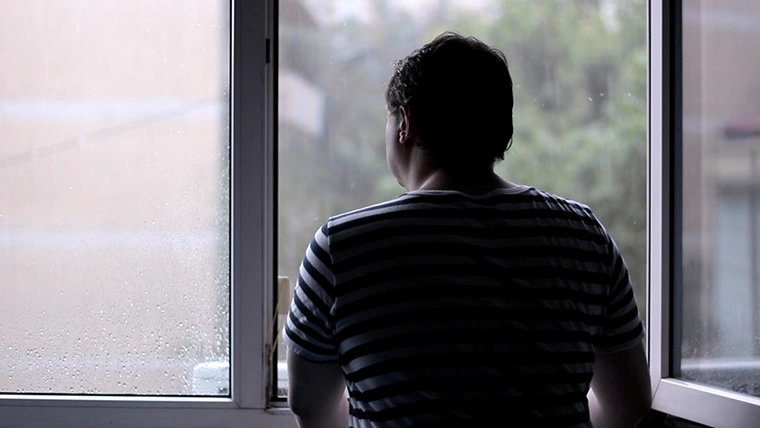
Home is a verb
I draw my conclusions on living in Bucharest in a conversation with Bogdan Iancu (researcher, Romanian Peasant Museum), who analyzed the stories of nationalized homes. He sought to eschew the “Sorrow Memorial-type narrative”, which categorizes characters into victims and torturers. He wanted to understand the material culture behind this type of living: what happens to a nationalized home? It is first divided by agents of the state and turned into a common good. Then, following the retroceding law, the wheel of living policies turns, in favor of individual property.
No new social housing has emerged over the course of the past 25 years in Bucharest—this, “even as Romania has the richest private dwelling fund in Europe” (Iancu). The state’s agents didn’t think it necessary to broach the issue of social housing. They kept changing the rental law, to the point where no one is a legal tenant anymore. The credit market has become legalized. Bucharest, along with all of Romania, was de-industrialized, “and a great deal of people have been stripped of their financial potential”.
Those left with no financial potential include the evicted, the homeless, Bucharest dwellers in the ghettos and other marginal areas and, in the best scenarios, tenants for life. Those who still have some financial potential left struggle to become owners with all their might: in apartment buildings, through the First Home program, and, ideally, by owning a home with a garden. In Bucharest “many historic dynamics blend between those walls”. They relentlessly link the way you live with what you are in the eyes of others.
